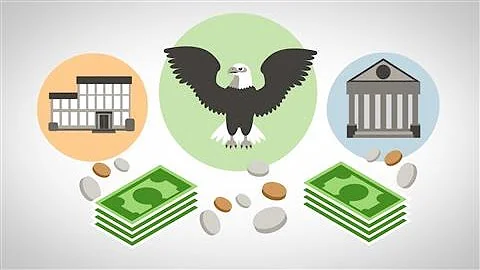Due to the implementation of the Fed's interest rate hike this month and the rise of risk assets such as the stock market, the US dollar has been suppressed by profit taking, and the RMB has fluctuated higher against the US dollar. This week is expected to record "two consecutive positives", and the current exchange rate is trading at 6.6930 in a volatile manner. cast. The analysis team of HYCM Industrial Investment (UK) said that despite the pressure on the US dollar, it still maintains a strong trend. It is expected that the RMB against the US dollar will most likely maintain a range-bound trend for the rest of this week.
Federal Reserve Chairman Powell gave testimony on the semi-annual monetary policy report before the Senate Banking Committee on June 22. He said the U.S. economy can withstand tighter monetary policy and the Fed plans to continue raising interest rates until there is clear evidence that inflation is slowing to its 2% target. On the 23rd, Powell reiterated his hawkish stance at the House Financial Services Committee and promised to "unconditionally" curb rising inflation.
In his testimony, when asked about the possibility of a 100 basis point rate hike, Powell said he would never rule out a rate hike of any magnitude. When asked how the Fed would respond if raising interest rates causes a sharp slowdown in the economy while failing to reduce inflation quickly, Powell emphasized that the Fed would not shift from raising interest rates to cutting interest rates because of this.
Last week the Federal Reserve announced a 75 basis point interest rate hike, the largest rate increase since 1994. Federal Reserve Governor Michelle Bowman said on the 23rd that she supports a 75 basis point interest rate hike at the July interest rate meeting, and then several consecutive interest rate hikes of at least 50 basis points until inflation pressure cools down.
HYCM Industrial Investment (UK) analysis team said, "We speculate from the latest public data that the Federal Reserve is expected to raise interest rates by 175 basis points before the meeting in December this year. This can be interpreted as that before the Federal Reserve slows down the pace of interest rate hikes, There will be at least one more rate hike of 75 basis points. A 75 basis point rate hike is most likely in July or September. "
The U.S. labor market, which is still booming, has now shown some initial signs of weakness. Data released on the 23rd showed that the number of initial jobless claims fell slightly last week; however, the growth rate of PMI, a key indicator of manufacturing and service industry activities, fell to the lowest in five months.
However, as concerns about economic recession have increased, U.S. bond yields have fallen, and the prices of risk assets such as the stock market have rebounded. The U.S. dollar has fluctuated and declined against major currencies, and the U.S. dollar index continues to fluctuate below 105.
HYCM Industrial Investment (UK) analysis team pointed out, “The Federal Reserve’s aggressive monetary policy may trigger an economic recession, making market sentiment volatile. Part of it is related to the uncertainty of when inflation will peak, while another part is driven by the central bank’s policy. Although the U.S. dollar has temporarily retreated, the prospect of interest rate hikes still provides strong support for the U.S. dollar. Overall, the impact of risk sentiment may dominate, which in turn will continue to support the U.S. dollar. "
The U.S. dollar index has risen by 8.8% this year. It even broke through the 105 level in mid-June and is still trading around 104.30. This level is still the highest since the end of 2002. In a high-inflation environment, the dollar will theoretically depreciate in the long run, but the current situation is delicate. The dollar is likely to weaken once global growth concerns subside and geopolitical tensions cool.
Next week, the market will usher in speeches by many important Federal Reserve officials, including Federal Reserve Chairman Powell, San Francisco Fed President Daly, Cleveland Fed President Mace, and St. Louis Fed President Bullard, when they will deliver speeches on the economic outlook and inflation expectations. Investors need to pay attention to the words of these Fed officials and whether they will adopt a more aggressive attitude at next month's interest rate meeting.
In addition, investors also need to pay attention to some important economic data, such as the U.S. GDP price index in the first quarter, the U.S. core PCE price index in the first quarter, the U.S. core PCE price index in May, and the U.S. preliminary data for the week ending June 25. Unemployment claims, and the end of the U.S. manufacturing PMI in June. In addition, China will also announce the official manufacturing PMI for June, as well as China’s Caixin manufacturing PMI data for June.
In terms of RMB, the profit-taking of the US dollar and the strong performance of China's A-shares and Hong Kong stocks have further enhanced the attractiveness of RMB assets. As capital flows become more balanced, the RMB exchange rate begins to gradually stabilize.
HYCM Industrial Investment (UK) analysis team said that although the US dollar currently remains strong, as the internal and external environment gradually undergoes marginal changes, the support for the RMB exchange rate is expected to be strengthened again, and the probability of another sharp decline is small. However, in the short term, while the U.S. dollar index remains strong, there may still be some room for adjustment in the RMB exchange rate.
It is expected that the RMB exchange rate will remain basically stable at a reasonable and balanced level in the third quarter of this year. The RMB exchange rate will fluctuate in two directions and become more elastic. It will further play the role of an automatic stabilizer in regulating the balance of payments and demonstrate the macroeconomic "shock absorber" function. In the medium to long term, the US dollar index has limited room to continue to rise and China's domestic economy is gradually bottoming out, which will support the stabilization of the RMB exchange rate.
From a technical point of view, the MACD histogram gradually converges above the zero axis, which indicates that there is greater selling pressure above the US dollar and there is room for further decline in the short term for the US dollar. The RSI indicator continues to trend flat in the neutral zone. In the short term, the exchange rate is still expected to continue to fall into range consolidation, with the range roughly being 6.6290-6.7830. Currently, USD/CNY has effectively broken through and stood on the 200-day moving average and the downward trend line formed in April 2021. USD/CNY will continue to provide strong support at the 61.8% Fibonacci retracement level of 6.6291 from the February low to the May high. In the upward direction, the resistance is at 6.7035, 6.7100 and the previous high of 6.7309; in the downward direction, the support is at 6.6900, 6.6845 and 6.6705.

This article comes from the financial world





















